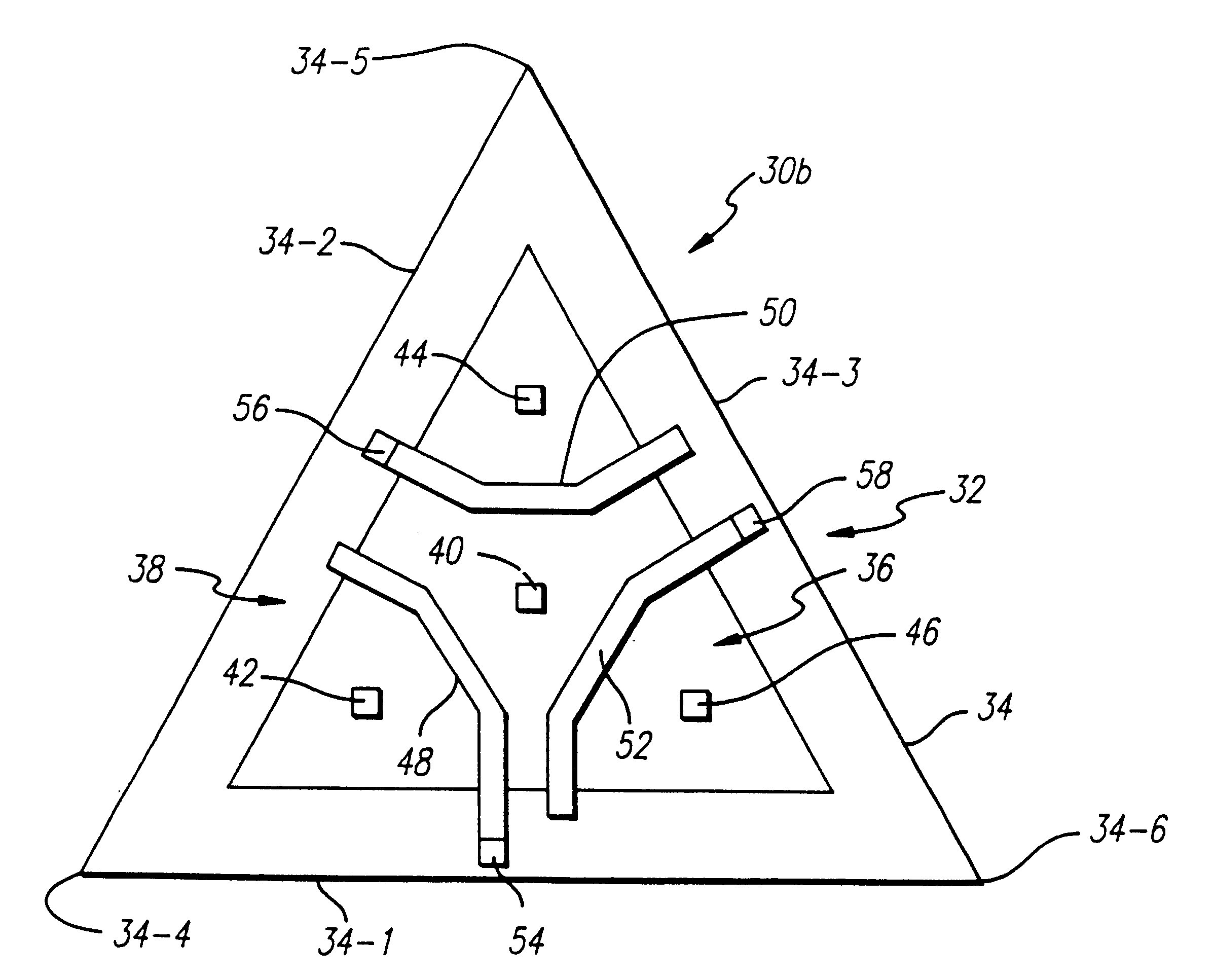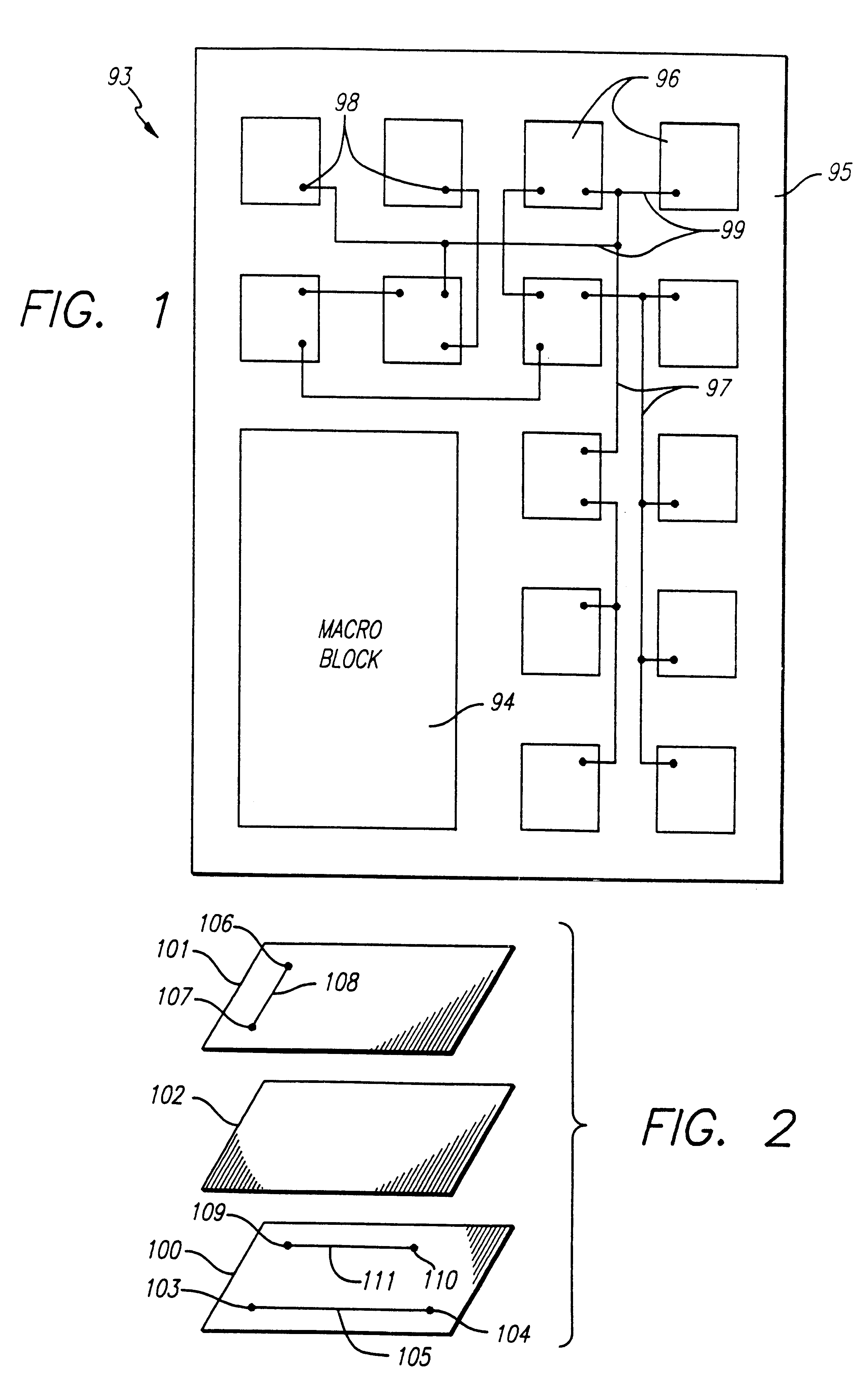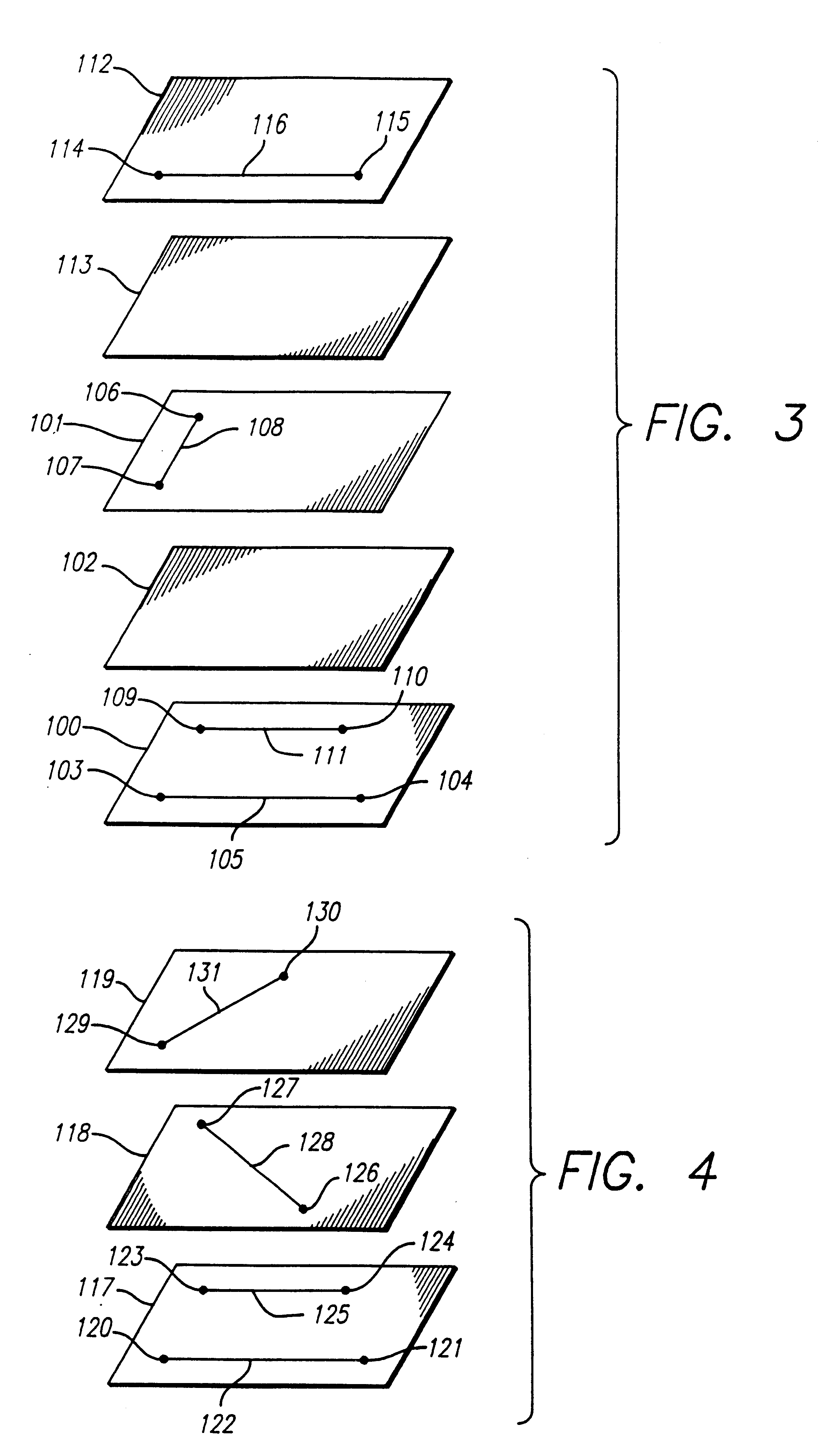Programmable triangular shaped device having variable gain
a triangular device and variable gain technology, applied in the field of microelectronic integrated circuits and electronic systems, can solve the problems of increasing path delay, affecting the speed of data communication, and affecting the accuracy of data communication, so as to reduce parasitic capacitance and other undesirable effects, reduce the total length of the interconnect congestion, and reduce the effect of parasitic capacitan
- Summary
- Abstract
- Description
- Claims
- Application Information
AI Technical Summary
Benefits of technology
Problems solved by technology
Method used
Image
Examples
Embodiment Construction
In FIG. 2, two conventional layers of metal are shown schematically. This is an exploded diagram separating the individual layers for clarity. A first metal (M1) layer 100 is shown separated from a second metal (M2) layer 101 by a dielectric layer 102. A conventional rectangular routing arrangement is illustrated. The first metal layer 100 provides for electrical connections in a direction that is angularly displaced 90 degrees from electrical connections provided by the second metal layer 101. For example, in the M1 layer 100, a point 103 is connected to a point 104 by a metal wire 105. In the M2 layer 101, a point 106 is connected to a point 107 by a metal wire 108. The wire 105 is angularly displaced 90 degrees from the wire 108; in other words, the wire 105 in the M1 layer 100 is perpendicular to wire 108 in the M2 layer 101. Wires in the same layer will be parallel to each other. For example, point 109 in the M1 metal layer 100 is connected to point 110 by a wire 111. The wire ...
PUM
 Login to View More
Login to View More Abstract
Description
Claims
Application Information
 Login to View More
Login to View More - R&D
- Intellectual Property
- Life Sciences
- Materials
- Tech Scout
- Unparalleled Data Quality
- Higher Quality Content
- 60% Fewer Hallucinations
Browse by: Latest US Patents, China's latest patents, Technical Efficacy Thesaurus, Application Domain, Technology Topic, Popular Technical Reports.
© 2025 PatSnap. All rights reserved.Legal|Privacy policy|Modern Slavery Act Transparency Statement|Sitemap|About US| Contact US: help@patsnap.com



